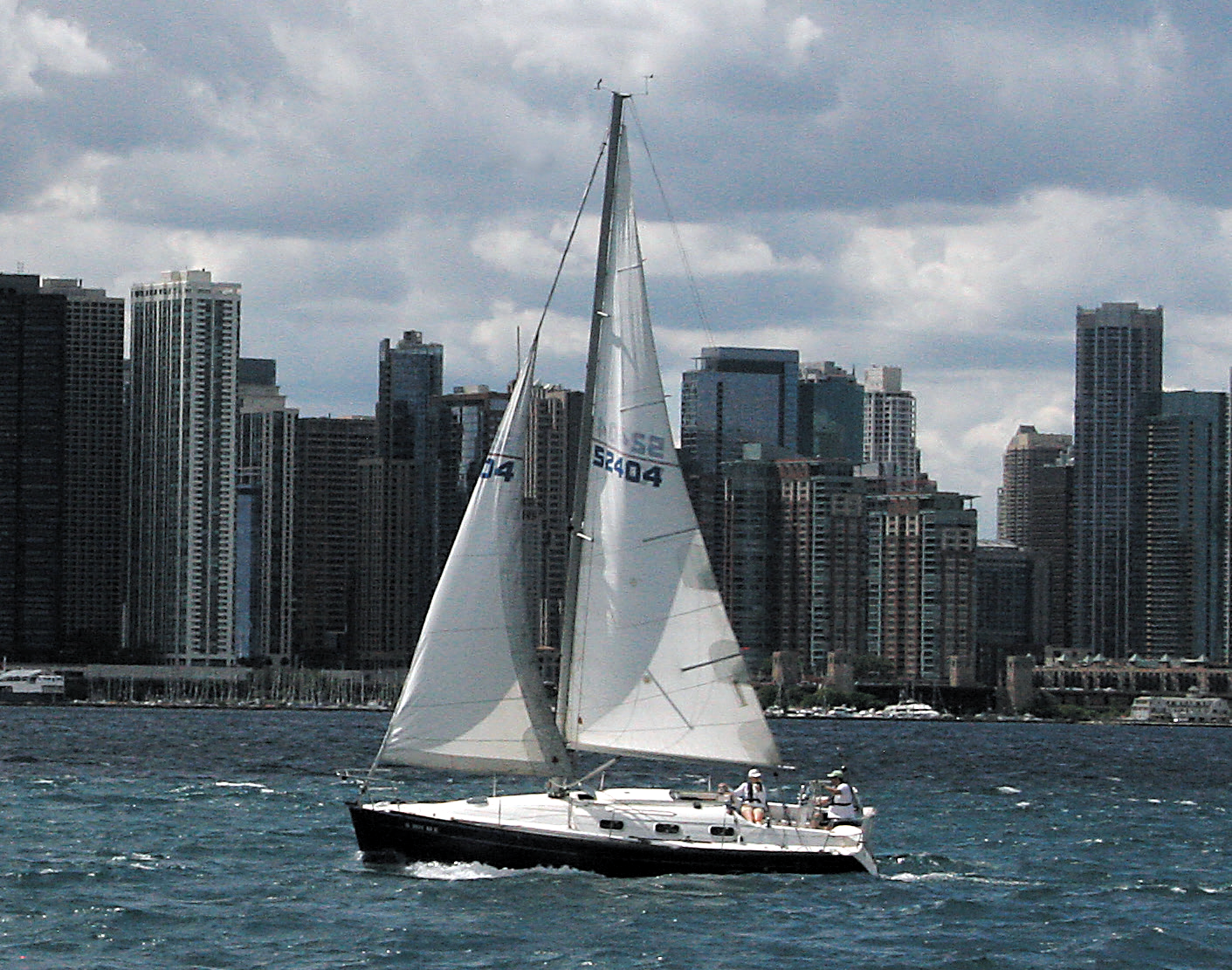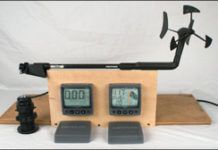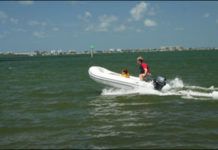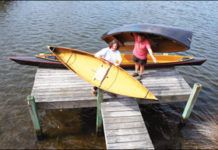PS Advisor: Can AIS Serve as Backup GPS?
In your testing of the West Marine AIS1000 (September 2009), did you identify what NMEA sentences it outputs? I’m thinking of buying one and agree that their documentation is not adequate. I’m trying to determine whether it can be used as a general-purpose, backup GPS receiver.
Testing Smart Phones at Sea
Practical Sailor tests a cross-section of PDAs, pocket PCs, and smart phones between $100 and $800. Palm OS and Windows Mobile software were included. Readability, functionality and practical application were foremost considerations. Reliability, weather resistance, and batteries were also considered. We evaluated Palm Phones Palm Treo, Hewlett Packard iPAQ, Palm PDA Palm TX, Active Captain MobileSource, Memory Map Navigator, and Ozi Explorer CE. Testers compared the mobile devices to a handheld GPS specifically designed for navigation, the Garmin Oregon 400C.
Drug-free Seasickness Solutions
Practical Sailor testers report on five alternative seasickness treatments and prevention. Acupressure bands Davis Queaz-Away and electrical stimulation bands like the ReliefBands use pressure points on the inside of the wrists to ease sickness. Queasy sailors have long turned to ginger-based remedies at sea, and Sailors Secret Ginger Caps offered relief for mild cases of seasickness, with no side effects. Two recent introductions to the market claim to use herbal therapy to prevent symptoms of seasickness. MotionEaze is a liquid solution of essential oils applied to the soft tissue under the ear lobe. Quease Ease, a cylindrical metal tube with perforations at the top like an inhaler, uses essential oil aromatherapy to relieve symtpoms.
In Distress? Theres No App for That
This months review of "smart phone" navigation tools and software got me thinking about my own descent into the mobile phone abyss, and more broadly, how the communication revolution is reshaping our approach to life at sea. For many years after moving ashore, I resisted the urge to own a mobile phone. That changed after my pregnant wife got stranded in a New England snowstorm. Now, a half-dozen saltwater-soaked phones later, my immersion into cell-phone society is complete. As this months article shows, the same tool I use to order a pizza can now guide me across the Atlantic. (Although Id never encourage taking such a risk.) So when the makers of safety equipment and government spokesfolks ballyhoo a too-good-to-be-true safety communication network for mariners, the Global Maritime Distress and Safety System (GMDSS), it doesn't come across as science fiction.
PS Advisor: Replacing Lifelines
The International Sailing Federation (ISAF) and other regulatory bodies frown upon using PVC-coated 7x7 wire for lifelines. As you noted, this is because lifelines should be easily inspected for corrosion or other signs of possible failure. The corrosion that can take place under the coating is not just a saltwater issue. Air quality and other factors also can lead to corrosion. We suggest uncoated, 1x19 stainless-steel wire with swaged terminals—3/16-inch wire for upper lifeline and 1/8 inch for the lower. Uncoated 1x19 is easy to inspect, and even though the top wire is overkill from a tensile-strength perspective, it will be durable and almost as comfortable to lean against as the coated wire. It’s also more convenient to lash netting to than a smaller-diameter option.
Testers Take Tacktick and Nexus Wind Instruments for a Spin
Practical Sailor testers compared Tackticks improved Race Master system to the Nexus Start Pack 3, a hybrid wired/wireless system. The Tacktick Micronet wireless wind instrument, a compact system featuring wireless display and a masthead sensor, has a strong following among racers. It has proven to be a good choice for those sailors serious about improving race performance as it has many options for tracking performance on the course in real time. Its ability to work with a 12-volt system makes it a good choice for small boats. The versatile, expandable Nexus hybrid has an impressive and intuitive interface and a graphic analog wind representation. It provides all of the basic functions a cruiser or racer uses most, and testers found the analog wind display appealing.
Mens Foul-Weather Gear Update
Practical Sailor recently tested the first line of foul-weather gear released by Massachusetts-based Bluestorm. The three mens bibs-and-jacket sets are named appropriately for the general areas they are designed for use in: the lightweight Latitude 33, medium-weight Latitude 48, and heavy-duty Latitude 61. The sailing jackets and bibs were tested for wind- and water-resistance, fit and comfort, design, construction quality, warmth, design and fit of hood, design and construction of zippers, and reflectivity. Small, innovative details that Bluestorm incorporated into its foulies include the triple-closure system for jacket storm flaps and recessed Velcro fasteners. All sets have excellent hood design, and testers found the jackets to be supple, highly breathable, and comfortable, if a bit pricey.
West Marine and Zodiac V-bottom Inflatable Dinghies Put to the Test
Practical Sailors on-the-water and bench tests pitted West Marines HP-V 350 with a high-pressure V-shaped bottom against Zodiacs FR340 Fastroller with Acti-V bottom, which has a high-pressure floor and an inflatable V-shaped keel. Testers looked closely at design and construction, and rated the boats for on-water performance, including how quickly the dinghies got a plane, how dry and comfortable the ride was, and how the inflatable boats handled at varying speeds.
The Lightweight, Carbon-Fiber Wing Dinghy is a Classy, Rowable Sailing Dinghy
The lines on the carbon-fiber Wing Dinghy date back to Nat Herreshoffs Frost Fish, a dinghy with a reputation for performance under sail and when being rowed. Diana Russells Wing Dinghy hull weighs only 55 pounds. Built by Savage River Works using conventional fiberglass FRP skin, carbon outer skin, and Kevlar inner hull skin, the 9-foot dinghy tests well against the popular Bruce Bingham-designed Trinka 10. The Wing Dinghy also scored well in the sailing, hoisting, towing, and rowing tests.
Two 12-inch Chartplotters Go Head-to-Head
After testing the 12-inch Garmin 5212 touchscreen and the Raymarine E120 multi-function displays in August 2008, Practical Sailor pitted the newest big-screen chartplotter, the Simrad NX45, against its well-used Garmin, the subject of a long-term test on one of Practical Sailors test boats. For this head-to-head test, we looked at day and night viewability, functionality, user-interface, and price. We also looked closely at the software that each uses: Garmin uses Bluechart g2 software, Simrad C-Map MAX, and Raymarine Navionics.


















































